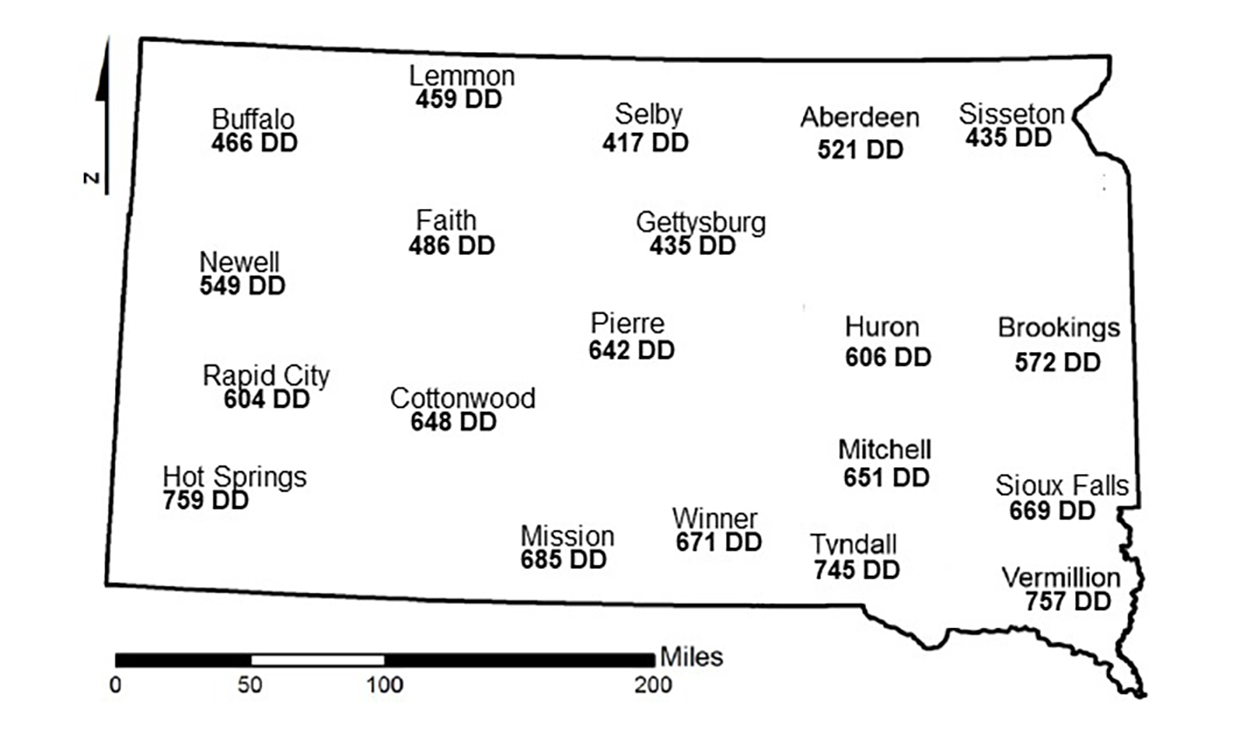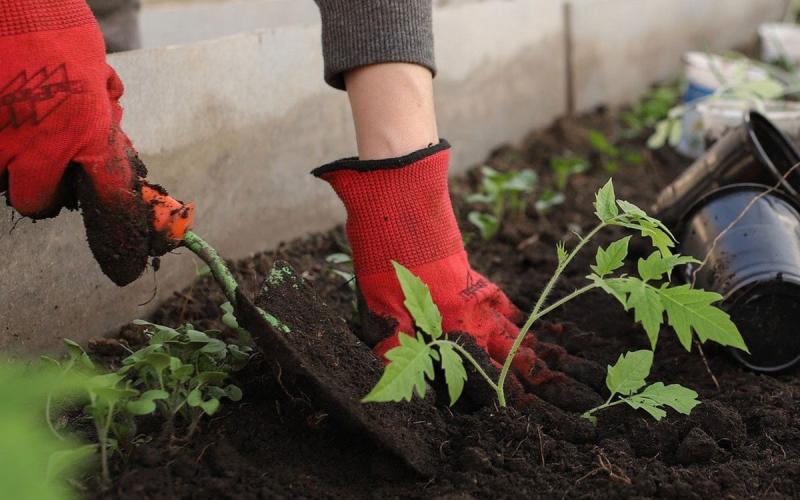Written with contributions by Shelby Pritchard, former SDSU Extension Pest Management Specialist.
Originally Submitted: June 10, 2022
Although gardening is well underway in South Dakota, squash vine borers should not be an issue for at least another week (Figure 1). When an area hits 1,000 accumulated degree days, squash vine borer moths will begin emerging (Table 1).
Predicting Squash Vine Borer Activity With Degree Days

| Accumulated Degree Days |
Squash Vine Borer Activity |
|---|---|
| 1000 | Moths will emerge from soil |
| 1245-1300 | Eggs will hatch |
| 1905-1960 | Caterpillars will feed within plants |
| 2650-2705 | Possible second generation of moths emerge |
The emergence of squash vine borer moths can be estimated by using degree days with a developmental threshold of 50°F. As mentioned previously, the squash vine borer moths emerge from the soil when 1000 degree days accumulate. Once eggs are laid on the stems of host plants, they require another 245-300 degree days to hatch. After hatching, the new larvae quickly enter the squash stem. The larvae will feed inside the plant for another 660 degree days. The larvae will then emerge from the plants and burrow into the soil to pupate. The pupae require an additional 745 degree days before the next moths emerge. We don’t normally see a second generation of squash vine borers in South Dakota, but it is possible.
As a reminder, the equation for degree days is:
(Maximum daily temperature + Minimum daily temperature) ÷ 2 - The Developmental Threshold
You can check the base 50 degree days at a weather station near you using the SDSU Mesonet degree days tool.


